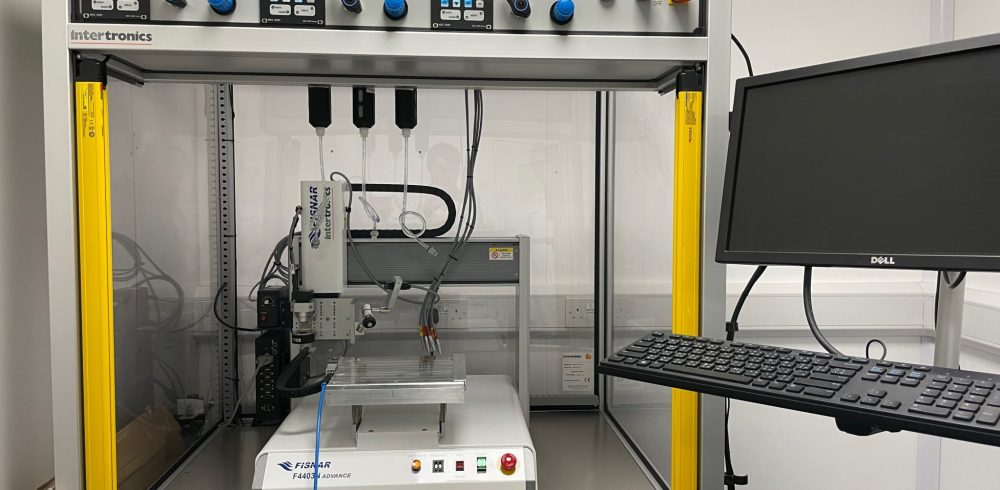Palintest designs and manufactures water analysis technologies that empower individuals to make water quality decisions with confidence. It provides equipment globally for water quality monitoring and disinfection control for various applications to protect lives and the environment. Applications for its equipment include: managing pool and spa water quality, working with utilities companies to meet regulatory standards, providing test kits for emergency response situations, and helping food and beverage manufacturers reach the highest safety standards.
Palintest builds on its long history of innovation by continually developing new technologies and improving its existing products, to make water testing even more accessible and straightforward.
One key product line for Palintest is Kemio™, an easy to use test method that employs a sophisticated electrochemical technique, powered by patented single-use sensor technology. The product tests the concentration of chlorine, chlorine dioxide, chlorite, and peracetic acid, giving a clear pass or fail mark in 60 seconds.
Unlike other water testing options, Kemio is not affected by colour, turbidity (cloudiness), floating particles, or ambient light. The system is easier and safer to use compared with many alternative products such as tablets or liquid-based testing.
Manufacturing sensors repeatably
As part of the manufacturing process, Palintest dispenses a low-viscosity, water-based reagent onto the sensor surface ─ different reagents depending on the parameter the sensor is testing for.
Initially, the sensor manufacturing process was highly manual; operators would place the sensor onto the dosing system, pick it up and move it to the dryer, and then manually package and seal it. To improve accuracy, repeatability, and throughput, Palintest automated the process and upgraded its dispensing technology to a jetting valve.
Jetting valves provide non-contact dispensing with a high degree of accuracy and repeatability, because of their ability to apply ultra-low volume deposits of material at high speed. This method is non-contact, so there is no possibility of damage to the workpiece.
To take advantage of these benefits, Palintest purchased a jetting valve system and integrated it into a larger machine. However, almost immediately, there was corrosion in the system so Palintest approached Intertronics to supply an alternative system.
Following research, Palintest selected the VERMES MDS 3020+ Microdispensing Valve which dispenses medium viscosity materials up to 8000 mPas in repeatable single dots of ≥5 nl at up to 3,000 times per second.
Specific to production requirements, components of the VERMES MDS 3020+ valve including tappets, nozzles, and heating options can be customised to optimise the dispensing process.
Paul Whitehead, Strategic Accounts Manager at Intertronics said: “There were a couple of important selection criteria for this application. The wetted area ─ anything in the material path ─ had to be compatible with the reagents Palintest used. Wholly ceramic nozzle inserts are difficult to produce and tend to be quite expensive. From experience, we recommended a valve with a ceramic tappet and coated carbide tips. Trials found that this combination did not react with the reagents and there was no corrosion.”
Samantha Lunn, Sensor Development Manager at Palintest explained: “Intertronics were extremely receptive to what we needed, and from first contact it was clear they were willing to come on the journey with us. Paul was always available to support with anything we needed, suggest alternative methods to trial, and help with process development.
Process development
However, this change in method meant that the new production system was no longer comparable to Palintest’s development system., when developing new sensor variants for different target analytes. Palintest therefore returned to Intertronics for help building a development system. Intertronics was able to provide a development machine that replicated Palintest’s production system, with the VERMES jetting valve mounted on a Fisnar dispensing robot with vision system.
Intertronics supported Palintest closely with process development to achieve minimal downtime when cleaning the VERMES valve and replacing the consumable tips. Working together on process parameters using the development machine meant Palintest was able to extend the process life of the production equipment.
Samantha Lunn, Sensor Development Manager at Palintest explained: “Using the same dispensing valve across our production and R&D systems makes it much easier to transition new products to our main production line. Intertronics were instrumental in setting this up, helping with programming, installation, and troubleshooting.”
Productivity with automation
Armed with its new production system, Palintest can now produce its sensors in higher volumes. The automated equipment covers multiple processes that were previously manual, producing a packaged sensor.
Matthew Hentley-Richold, Production Manager at Palintest said: “With our new automated system, we can now produce up to 24,000 sensors each day, compared with under 10,000 on the previous line. The help from Intertronics minimised downtime, which was a key factor to increasing sensor output.”
The equipment has enabled huge growth in Palintest’s manufacturing output, enabling it to increase its stock levels to fulfil customer orders more rapidly. Palintest is hoping to add a second line to expand operations further in future.
Product benefits
- Suitable for low (up to 300mPas) to medium (up to 8,000mPas) viscosity material
- Reduced production times and increased throughput from fast speeds: frequency >3,000Hz
- Multiple customisable configurations using interchangeable parts such as nozzle heating
- Dispense failure or stoppages are trackable
- Easy cleaning process reduces downtime
Applications include: Life sciences, medical diagnostics, pharmaceutical, electronics, semiconductors, watch manufacturing, precision mechanics, renewable energy, research and universities, data tracking, automotive, consumer electronics, lighting and optoelectronics.















